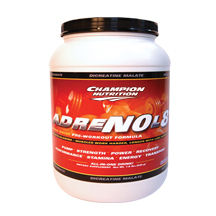Your time in the gymnasium is precious. If you really want to maximise your genetic potential, your energies must be dedicated to making optimal use of every training moment. One of the best ways to make your workouts more productive is to add stretching.
Reduces Lactic Acid Build Up
Nothing sabotages a workout more than the build up of lactic acid in your muscles. {Lactic acid is a by-product Adenosine- Try -Phosphate} the primary source of energy used to fuel your muscles during a training session. It is responsible for the burning sensation that accompanies intense training and eventually impedes your ability to achieve a muscular contraction. Once it builds up, you simply cannot continue to train. Selective muscular stretching helps to neutralize the effects of the lactic acid by restoring blood flow to your working muscles. It provides an outlet to flush metabolic waste from your body, providing rapid regeneration of your muscular capacity.
 Better Muscular Recovery
Better Muscular Recovery
Contrary to popular belief, muscle tissue is actually broken down, not built up during resistance training. When a muscle is subjected to intense stress, tiny micro tears develop in its fibres. This damage contributes to the presence of delayed onset muscle soreness {DOMS} that often follows a gruelling workout. By expediting nutrient delivery to your muscles, selective stretching helps repair muscle tissue and accelerate the healing process. There is less post-exercise fatigue and diminished muscle soreness. The result is better recuperation between workouts.
Increased Range Of Motion
During weight training concentric repetitions cause your muscles to shorten {concentric meaning going against gravity with a given weight}. Over time they can adapt to this reduced range of motion. This limitation decreases the amount of force you are able to generate in your contractions, there by compromising muscular gains. Selective muscular stretching helps counteract these adverse effects, elongating your muscles to pre-exercise levels. You maintain greater elasticity in your joints and connective tissue, facilitating your ability to work through a full range of motion.
Elevated IGF-1 Levels
In conjunction with Growth hormone, IGF-1 {insulin growth factor} plays a central role in promoting muscular development. Among its many functions, IGF-1 helps increase thermogenesis and delivery of amino acid uptake. These factors contribute to reduce excess body fat while fostering gains in lean muscle tissue. Studies have shown that repeated stretching substantially raises circulating levels of IGF-1. These levels can remain elevated for up to several hours after stretching, providing a large window for muscular growth.
Enhanced Growth Potential
Your muscles are encapsulated in a dense, fibrous sheath called fascial tissue. Since its primary role is to protect your muscles {and other internal structures} from injury, fascia is extremely strong and resilient. While strength of this tissue is necessary as a safeguard against injury, it also constricts the ability of your muscles to expand past a certain point. Stretching can help to make the fascia more pliable, loosening its hold on the muscle. The loosening of the muscle allows the underlying fibres additional room for growth, expanding your genetic potential.
 What’s the Best time to Stretch?
What’s the Best time to Stretch?
Well you should never use stretching as a warm-up or stretch immediately upon entering a gym. Stretching should always be done just after a warm up. It should never be the warm up itself. Go for a walk on the treadmill for about 5-10 minutes on a slight upward grade, and stretch prior to your workout, even better stretch even after the workout for even better results.

Leave a Reply
You must be logged in to post a comment.